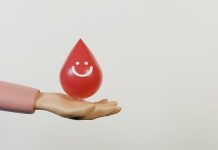
Monitoring blood pressure during exercise is becoming increasingly recognized as a crucial aspect of health, especially for individuals with hypertension or heart conditions.
Understanding how your blood pressure responds to physical activity can provide key insights into your cardiovascular health and help tailor exercise programs that are safe and effective.
Blood pressure naturally rises during exercise as your heart works harder to pump blood to muscles and organs.
This increase is typically temporary and should return to normal levels after the exercise ends. However, how much it rises can vary widely from person to person.
For those with high blood pressure or heart disease, monitoring these changes is particularly important.
Exercise is generally beneficial for lowering blood pressure over time, but in some cases, particularly vigorous or inappropriate forms of exercise can cause unsafe spikes in blood pressure. Monitoring helps ensure that exercise intensity remains within safe limits.
Research supports the benefits of keeping an eye on blood pressure during physical activity.
For example, a study published in the American Journal of Hypertension found that people with high blood pressure who participated in regular exercise could significantly reduce their resting blood pressure over several weeks.
However, the study also emphasized the importance of monitoring blood pressure during exercise sessions to avoid potentially dangerous increases.
One common method of monitoring is using a blood pressure cuff before and after exercise sessions. More advanced wearable technology that can provide real-time blood pressure readings is also becoming more accessible and popular.
These devices allow for continuous monitoring that can alert users to any significant changes that might require adjusting the intensity of the workout or seeking medical advice.
The type of exercise also plays a crucial role in how blood pressure responds. Aerobic exercises like walking, jogging, cycling, or swimming are typically recommended for managing high blood pressure.
These activities help improve the efficiency of the heart, which can lower the pressure needed to pump blood.
In contrast, high-intensity or resistance exercises might cause more significant rises in blood pressure and should be approached with caution, particularly for beginners or those with existing high blood pressure.
It’s also worth noting that the environment can affect exercise-induced blood pressure changes. For instance, exercising in very hot or very cold temperatures can place additional stress on the heart and blood vessels, leading to higher than normal increases in blood pressure.
Therefore, it’s advisable to perform exercises in a controlled environment, especially for those monitoring blood pressure issues.
Regular exercise, under the right conditions and with proper monitoring, can be an effective way to lower blood pressure naturally and reduce the risk of heart disease.
However, it’s essential for those with hypertension or cardiovascular issues to consult with a healthcare provider before starting any new exercise regimen. This ensures that the exercise is not only effective but also safe, tailored to individual health needs and conditions.
In conclusion, monitoring blood pressure during exercise is an important tool that can help people maximize the cardiovascular benefits of physical activity while managing risks.
Whether through traditional methods or modern technology, keeping track of how your body responds to exercise can lead to more personalized, effective, and safe fitness strategies.
If you care about high blood pressure, please read studies about unhealthy habits that may increase high blood pressure risk, and drinking green tea could help lower blood pressure.
For more information about high blood pressure, please see recent studies about what to eat or to avoid for high blood pressure, and 12 foods that lower blood pressure.
Copyright © 2024 Knowridge Science Report. All rights reserved.



